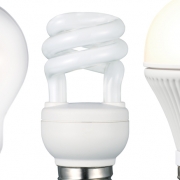Another Problem For The Alarmists: Americans Are Using Less Electricity.
For more than five years, Americans have been doing something decidedly un-American: We’ve been using less electricity.
Between 1950 and 2010, average residential electricity consumption increased 10-fold. But after that, in a shift that captured the attention of economists, government agencies and others who monitor the energy market, consumption began to decline.
“Any decrease is staggering,” said Lucas Davis, a Berkeley economist who has written about the shift. “Like so many things in life, electricity consumption has gone up and up and up. Any time it doesn’t go up, it’s news.”
The downward trend began soon after the 2008 financial crisis took hold. At the time, a reduction in electricity consumption wasn’t surprising: Whenever money is tight, consumers cut back. But in a historical departure, after the economy rebounded, the decline in electricity use persisted.
“Prior to 2008, you could see electricity demand and economic growth follow each other in lockstep,” said Glenn McGrath, an engineer in the office of electricity statistics at the U.S. Energy Information Administration—EIA for short. “The connection got broken, and it never pulled back together.”
A sustained decline has significant implications for household budgets, the environment and energy markets, according to Dr. Davis, with even modest decreases potentially adding up to billions in savings.
Figures published by the EIA suggest he’s right.
In 2017, Americans spent $178 billion on residential electricity, the EIA data show. That works out to about 10% less per household, after accounting for inflation, than residential customers spent in 2010.
The year-to-year changes in consumption aren’t large, and the individual numbers bounce around a bit, but the overall trend is clear: By 2017, electricity use was as low as it had been since the turn of the millennium with an average residence consuming 10.4 megawatt-hours of electricity annually, down from a peak of 11.5 megawatt-hours in 2010.
Last year, driven by a hot summer and cold winter, the numbers ticked up to an average of 10.97 megawatt-hours per residence, but the overall trend remained down.
None of this means that Americans are turning off their lights.
At the most basic level, the recent decreases were caused by the same thing that led to the past increases: changes in technology.
In the earlier decades, surges in consumption reflected a proliferation of electronics and household appliances. “If you compare a house in 1950 to a house to 2010, we just use a lot more stuff that uses electricity,” Dr. Davis said. “Vacuum cleaners, TVs, air conditioning—all the stuff we use.”
In 1950, low-cost air conditioners had only recently become available, and only around 9% of homes had a television. Today, 87% of homes are air-conditioned, and nearly all of them have at least one television, with 39% having three or more.
But today’s appliances and electronics are more efficient. New homes are tighter and better insulated. And most important, light-emitting diodes, or LEDs, have replaced traditional incandescent lightbulbs.
“No other change is so dramatic,” Dr. Davis said. “When you take an incandescent bulb out and screw in an LED, consumption goes down 80%. Imagine you could get a car that uses 80% less gasoline. That would be amazing.”
With the transition to LEDs, the amount of electricity used for lighting dropped 26% from 2015 to 2017. In raw numbers, that meant consumption slipped from 129.7 million megawatt-hours a year nationwide to 95.5 million megawatt-hours.
By 2021, if incandescent and halogen bulbs continue to be eliminated, the energy used for lighting is expected to decline by more than half, dropping to 61.3 million megawatt-hours annually.
But there could be a rebound effect if Americans decide to pour their energy savings into…more lights.
“The idea is when things get more energy-efficient, we tend to use more,” Dr. Davis said. “In lighting this is a really big deal. Cities install a lot more municipal lighting, there are more outdoor lights in neighborhoods, and in part, this is a response to changes in lighting.”
Plus, he said, other products coming onto the market could jump-start an increase in electricity usage.
“Is this a small pause?” he asked. “Or will we all buy electric vehicles?”
That would reduce vehicle emissions by half. But, Dr. Davis said, it would accelerate household electricity use by 20% overnight.
By Jo Craven McGinty at Jo.McGinty@wsj.com




